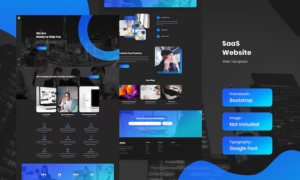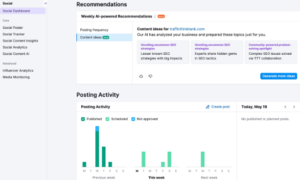In today’s fast-paced business landscape, optimizing productivity, ensuring data security, and maintaining regulatory compliance are paramount. Employee Monitoring Software has emerged as a valuable tool for businesses to achieve these objectives. This blog post aims to provide a comprehensive overview of monitor employee software, highlighting its benefits, key features, and use cases, considerations for choosing the right software, implementation best practices, and future trends.
Employee Monitoring Software Overview
Employee Monitoring Software refers to a suite of digital tools designed to track and monitor employee activities in the workplace. It plays a crucial role in modern businesses by providing insights into employee productivity, improving data security, and ensuring regulatory compliance. By monitoring employee behavior and work patterns, businesses can make informed decisions to enhance overall efficiency.
Key Features of Employee Monitoring Software
Employee Monitoring Software offers a range of essential features that empower businesses to effectively manage and optimize their workforce. These features include:
- Time Tracking: Accurate tracking of employee work hours, enabling businesses to measure productivity and identify areas for improvement.
- Screen Monitoring: Real-time monitoring of employees’ computer screens, allowing managers to ensure focused work and detect any unauthorized activities.
- Activity Logging: Comprehensive logs of employees’ digital activities, providing a detailed overview of the tasks performed and time spent on each activity.
- Reporting: Robust reporting capabilities that generate customized reports on productivity, attendance, and task completion, aiding management decision-making.
Benefits of Employee Monitoring Software
Employee Monitoring Software offers numerous benefits for both download data loss prevention tools:
- Increased Productivity: By providing insights into time management and identifying productivity bottlenecks, the software helps employees stay focused and enhances overall productivity.
- Reduced Operational Costs: Efficient time tracking and improved task allocation enable businesses to streamline operations, reduce wasted resources, and optimize costs.
- Improved Remote Work Management: With the rise of remote work, Employee Monitoring Software enables employers to effectively manage and monitor remote teams, ensuring accountability and productivity.
Compliance and Privacy
Addressing concerns about privacy and compliance is crucial when implementing Employee Monitoring Software. Businesses must prioritize ethical and legal usage of the software, adhering to data protection laws and respecting employee privacy. Transparent communication, consent, and clearly defined monitoring policies are essential to maintain trust and compliance.
Use Cases
Employee Monitoring Software finds applications across various industries and business scenarios:
- Remote Work Management: The software enables businesses to effectively track and manage remote teams, ensuring transparency, productivity, and collaboration.
- Project Tracking: By monitoring employee activities and progress on specific projects, businesses can identify bottlenecks, allocate resources efficiently, and ensure timely project completion.
- Time Optimization: Employee Monitoring Software helps identify time-wasting activities, allowing businesses to optimize workflows, manage priorities, and increase efficiency.
Choosing the Right Software
Selecting the most suitable Employee Monitoring Software requires careful consideration of several factors:
- Scalability: Ensure that the software can accommodate the growth and changing needs of your organization.
- Integrations: Look for software that seamlessly integrates with existing tools and systems to maximize efficiency.
- User-Friendliness: Choose software that is intuitive and easy for both managers and employees to use, minimizing the learning curve.
Implementation Best Practices
Successful implementation of Employee Monitoring Software involves:
- Clear Communication: Transparently communicate the purpose, benefits, and expectations of the software to employees, addressing any concerns they may have.
- Policy Development: Develop a well-defined and fair monitoring policy that outlines acceptable use, privacy protection, and consequences for policy violations.
Trends and Future Outlook
As workplaces evolve, Employee Monitoring Software continues to adapt to meet changing needs. Current trends include:
- Focus on Remote Work: With the rise of remote work, Employee Monitoring Software is evolving to cater to the unique challenges of managing geographically dispersed teams.
- Advanced Analytics: Software solutions are incorporating advanced analytics and machine learning to provide deeper insights into employee behavior and productivity patterns.
Conclusion
Employee Monitoring Software has become an indispensable tool for businesses seeking to enhance productivity, ensure data security, and maintain regulatory compliance. By understanding its benefits, features, use cases, and implementation best practices, businesses can make informed decisions to optimize their workforce and stay ahead in the evolving workplace landscape. As the software continues to evolve, it promises to be a valuable asset in driving workplace efficiency and success.



































